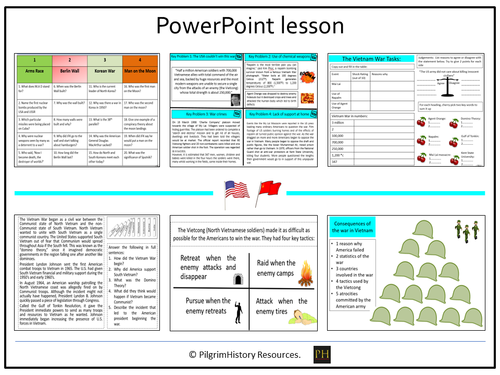


Cold War
The aim of this extended lesson on the Vietnam War is to analyse its significance; from its dubious beginnings and inception to the types of weapons used, the war crimes which followed and the ensuing lack of support at home as well as the consequences for the civilian population of Vietnam.
So why did America fail to win this war despite overwhelming manpower, control of the air and sea and the most modern military weapons available at the time?
As a starting point, students focus on Paul Hardcastle’s 19 song and his reasons for writing it and analyse the photograph of Kim Phúc before examining the details surrounding the Gulf of Tonkin resolution.
They are given a number of differentiated tasks to analyse both American and Vietcong tactics to win the war (using printable worksheets) and the horrors surrounding search and destroy and the My Lai massacre, the tunnelling system as well as the use of napalm and agent orange.
At the end they will prioritise the reasons for Vietcong success and American failure and how this war played its key part in the Cold War.
The central enquiry of this and subsequent lessons is to ask why did civilians fear for their lives during the Cold War? Students will map out their ideas each lesson (which can be plotted in different colours or dates to show the progress of their learning and centred around the key question) and build up a picture of how these and different countries in the world responded and acted in this new nuclear age.
The resource comes in PowerPoint format if there is a wish to adapt and change and is differentiated.
I have also included suggested teaching strategies to deliver the lesson.
Something went wrong, please try again later.
Amazing resources as always. Informative and clear to follow with great lesson activities that stretch and engage students in equal measure. Amazing history lessons!
Superb resources
Report this resourceto let us know if it violates our terms and conditions.
Our customer service team will review your report and will be in touch.